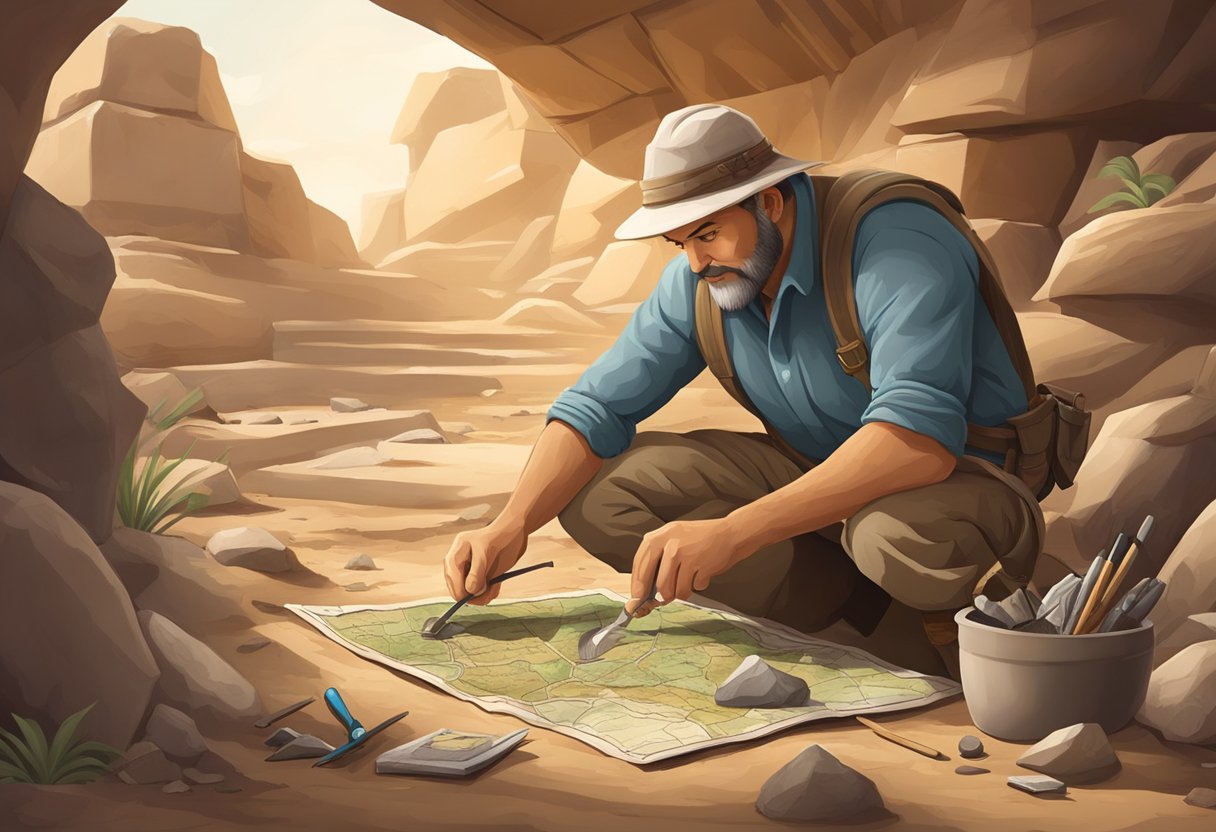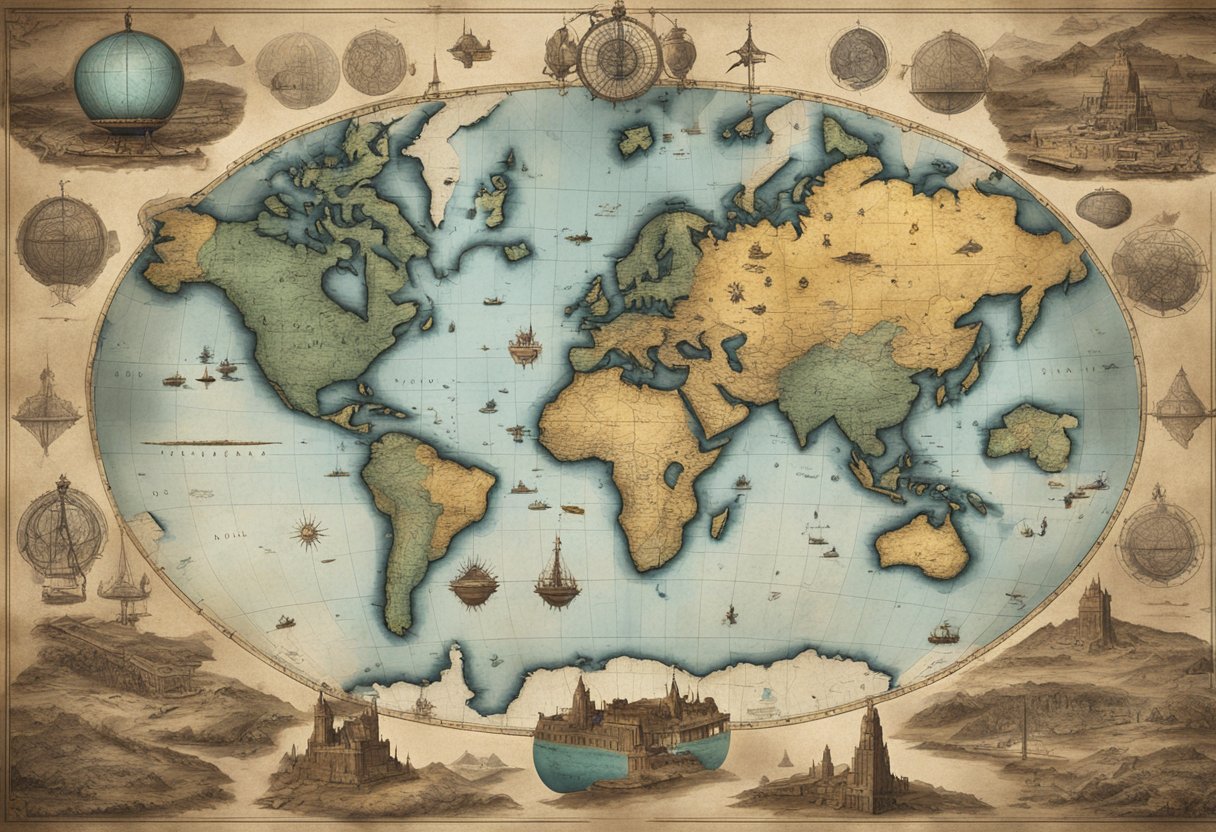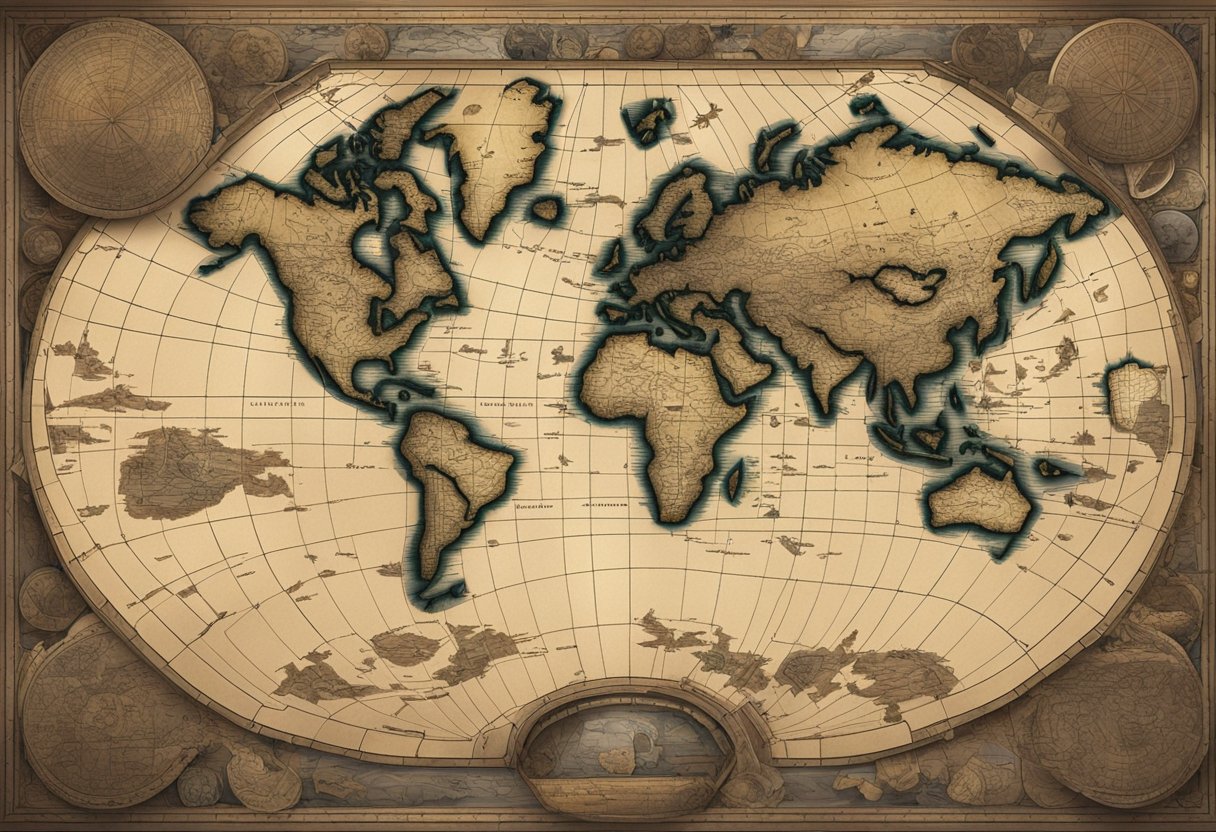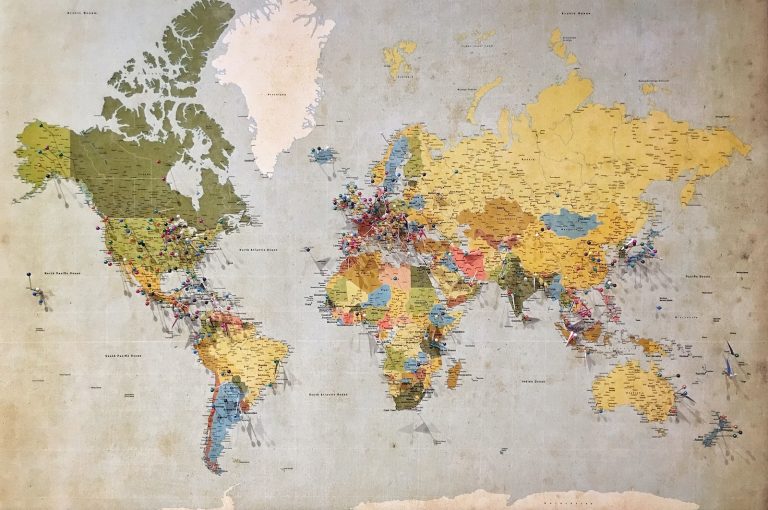X Marks the Spot: Lost Cities and Hidden Treasures Uncovered with Archaeological Maps
Lost cities and hidden treasures have always been a source of fascination for archaeologists and adventurers alike. The idea of uncovering ancient secrets and treasures buried deep in the earth has captured our imaginations for centuries. But how do archaeologists go about discovering these lost cities and hidden gems? The answer lies in the tools of their trade, including maps.

Archaeologists use a variety of tools to unearth the past, including shovels, brushes, and even satellites. But perhaps one of the most important tools in their arsenal is the map. Maps can help archaeologists locate potential sites for excavation and plan their digs. They can also provide valuable information about the layout of ancient cities and the location of important structures and artifacts.
The use of maps in archaeology is not a new phenomenon. In fact, ancient civilizations such as the Greeks and Romans used maps to navigate and explore their territories. Today, modern technology has made it easier than ever before to create detailed maps of archaeological sites and uncover the secrets of lost cities and hidden treasures.
Key Takeaways
- Maps are an essential tool for archaeologists in their quest to uncover lost cities and hidden treasures.
- Ancient civilizations also used maps to explore and navigate their territories.
- Modern technology has made it easier than ever before to create detailed maps of archaeological sites.
Unearthing the Past: Tools of the Trade

As archaeologists, we are always on the hunt for the next lost city or hidden treasure. But how do we go about finding these ancient wonders? Well, we have a few tricks up our sleeves.
Lidar: The Laser Sharp Look Beneath the Canopy
One of our favorite tools is lidar. This nifty little gadget uses lasers to create a detailed map of the ground beneath the forest canopy. It’s especially useful in places like the Amazon, where the dense vegetation can make it difficult to spot archaeological sites from the air. With lidar, we can see through the trees and discover ancient cities that have been hidden for centuries.
Satellite Imagery: Peering Through the Earth’s Secrets from Space
Another tool we use is satellite imagery. With the help of NASA, we can get a bird’s eye view of the earth and spot archaeological sites from space. This is especially useful in areas where the terrain is difficult to navigate, like deserts or mountains. With satellite imagery, we can see the lay of the land and discover hidden treasures that would have been impossible to find otherwise.
Ground Surveys: Boots on the Ground in Search of History
Of course, sometimes the best way to find archaeological sites is to get our boots on the ground and start exploring. With ground surveys, we can explore areas that are difficult to access with technology. We can dig up artifacts, pottery, and other treasures that tell the story of ancient history.
Chemical Analysis: Elements Telling Tales
Once we’ve found artifacts, we can use chemical analysis to learn more about them. By analyzing the chemical signature of a piece of pottery or other artifact, we can learn about the trade routes that existed in ancient times. We can discover where different materials came from and how they were traded across vast distances.
As you can see, we have a lot of tools at our disposal when it comes to discovering lost cities and hidden treasures. Whether we’re using lidar to see through the forest canopy or analyzing the chemical signature of an artifact, we’re always on the lookout for new ways to uncover the past.
The Treasure Map: Lost Cities and Hidden Gems

Ahoy, mateys! Welcome to our treasure hunt for lost cities and hidden gems. Archaeology is a lot like treasure hunting, but with more science and less swashbuckling. And what’s a treasure hunt without a map? In archaeology, maps are essential for finding lost cities and hidden treasures.
The Quest for El Dorado: Amazon’s Hidden Civilizations
The Amazon rainforest is a treasure trove of ancient civilizations waiting to be discovered. The Casarabe culture built conical pyramids and left behind intricate pottery. But finding these hidden gems is no easy feat. The dense jungle makes it difficult to navigate, and looters are always on the prowl. But with the help of satellite imagery and ground surveys, we’re getting closer to uncovering the secrets of the Amazon.
Pharaoh’s Hideaways: Egypt’s Sands of Time
Egypt is a land of mysteries and treasures, and the ancient Egyptians knew how to hide their riches. From the tombs of the pharaohs to the underground catacombs of Tanis, Egypt’s sands of time hold countless artifacts waiting to be discovered. But looters have been digging up ancient sites for centuries, and it’s up to us to protect these treasures and uncover the secrets of this ancient civilization.
The Mesoamerican Enigma: Pyramids, Pottery, and Prophecies
Mesoamerica is home to some of the most fascinating ancient civilizations in the world. From the earthworks and geoglyphs of the Nazca culture to the pyramids and pottery of the Maya, this region is a treasure trove of history and culture. But deciphering the prophecies and symbols left behind by these ancient civilizations is no easy task. It takes a combination of archaeology, anthropology, and a little bit of luck to uncover the secrets of the Mesoamerican enigma.
The Roman Cache: Uncovering the Empire’s Forgotten Stashes
The Roman Empire was one of the greatest empires in history, and its legacy lives on in the artifacts and architecture left behind. But not all of the treasures of Rome have been uncovered. From the trading centers of Ostia Antica to the forgotten caches of looters, there are still hidden gems waiting to be discovered. With the help of modern technology and a little bit of luck, we’re uncovering the secrets of the Roman Empire one artifact at a time.
So there you have it, mateys. Our treasure map to lost cities and hidden gems. Archaeology is a never-ending adventure, and we’re excited to see what treasures we’ll uncover next. Keep your maps handy and your shovels at the ready. The hunt is on!
Frequently Asked Questions

Which city played the ultimate game of hide and seek but was eventually found?
That would be the ancient city of Petra, located in modern-day Jordan. This city was lost to the Western world for centuries until it was rediscovered in 1812 by a Swiss explorer. The city was carved out of sandstone cliffs and was once a thriving center of trade and commerce.
Are there any real-life Atlantis candidates that archaeologists have stumbled upon?
While there have been many candidates proposed for the location of Atlantis, no conclusive evidence has been found to prove its existence. However, there are many sunken cities that have been discovered, such as the ancient city of Heracleion, which was once a major port in Egypt before it was lost to the sea.
How many ‘oops, we lost a city’ moments has humanity had?
Unfortunately, there have been many instances throughout history where cities have been lost due to natural disasters, war, or simply being abandoned. Some estimates suggest that there could be as many as 10,000 lost cities around the world.
What are some vacation spots where I can also play Indiana Jones and explore ancient ruins?
If you’re looking for an adventure, there are plenty of places around the world where you can explore ancient ruins. Some popular destinations include Machu Picchu in Peru, Angkor Wat in Cambodia, and the ruins of Pompeii in Italy.
Can you name a few ancient metropolises that decided to go incognito under the earth?
Sure thing! Some of the most famous underground cities include Derinkuyu in Turkey, which was once home to thousands of people, and the Cappadocia region, also in Turkey, which is home to a network of underground cities and tunnels.
What’s the deal with the cities in Africa that decided to ghost everyone?
There are many examples of abandoned cities in Africa, such as the ancient city of Great Zimbabwe, which was once a thriving center of trade and commerce. While the reasons for the abandonment of these cities vary, some experts believe that environmental factors, such as drought and soil erosion, may have played a role.


